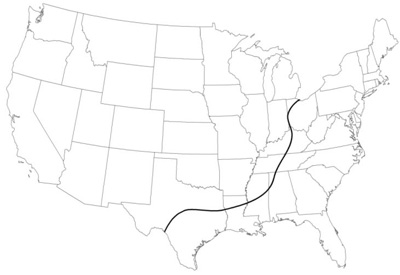Dr Vino's wine blog
wine talk that goes down easy
Reefer madness! Do Americans get worse Australian wine than Japan?
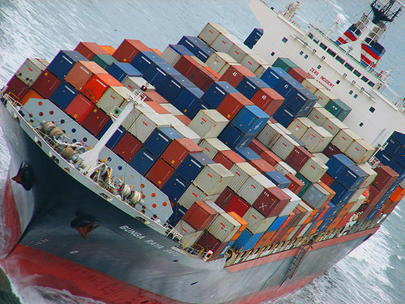
What wine lover doesn’t love the “reefer”? Simmer down, I’m talking about the refrigerated shipping container. Jancis Robinson had a piece in the FT about this chilling topic on Saturday.
As if that didn’t spark your interest in this aspect of logistics, it reminded me of a conversation I had a few weeks ago with a bigwig at a large Australian wine producer. He told me that they track the temperature fluctuations in their transportation containers via sophisticated thermometer. They have data–hour by hour if necessary–for the duration of the voyage. Sometimes the container gets “trans-shipped” and can lie around for weeks on a dock Singapore, a locale not at the top of everyone’s “cool and dry” places.
Here’s the really interesting part: in Japan, the importers demand the data and refuse the wine if it has been cooked. In the US, no. He also said they have different blends for different markets but that is not exactly news.
The only thing worse than having wine be corked is when it is cooked!
Related: “Wireless message in a bottle” (image)
More pinot envy – three pinots under $16!! Stadlmann, St Michael, Ninth Island
Ever since Miles told everybody to get pinot noir, it’s been hard to find a good value. We’ve taken the plunge before and came up with several good American ones under $20. Now we raise the degree of difficulty–times two!–by bringing down the price to $16 AND heading overseas where our currency usually now needs to be accompanied by something of material value such as gold coins to make a purchase. Without further ado…
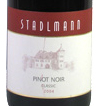 Stadlmann, Pinot Noir, 2005. $16 (find this wine)
Stadlmann, Pinot Noir, 2005. $16 (find this wine)
Usually a key to finding good value is finding words that people can’t pronounce. Usually Teutonic Pinot Noir goes by “Blaubergunder,” which is not as melodious as pinot noir and thus discounted. But this Austrian Pinot has “pinot noir” on the label! And it’s still a value! (They keep the unpronounceable stuff for the back such as the region of Niederosterreich in Thermenregion.) Great balance between fruit and acidity, this wine left Mrs. Vino asking why don’t stock more of this in the house.
 San Michele Appiano, Blaubergunder/Pinot Noir, Alto-Adige, 2006. $15 (find this wine)
San Michele Appiano, Blaubergunder/Pinot Noir, Alto-Adige, 2006. $15 (find this wine)
I tasted the wines recently from this producer (aka, confusingly, St Michael-Eppan) and they range from quite good to excellent. The entry level Pinot Noir is a steal with bright fruit, good acidity and subtle tannin that made me crave some fried food — I actually enjoyed it more than their riserva, which had too much oak. Their Sauvignons blancs are excellent but we can talk about those another time.
Ninth Island, Pinot Noir, Tasmania, $15. (find this wine)
I’d like to know more about the island of Tasmania–with global warming, it’s probably the terroir of the next few decades for Australia. I had a sparkling wine from there recently that was quite interesting; this pinot has straight-forward, tart cherry character of the grape and gets off easy in the oak department. Don’t save it for junior’s graduation from college; rather, drink it soonish, with dinner.
Is the clock ticking on hedonistic fruit bombs?
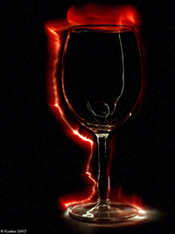 Is the backlash against “hedonistic fruit bombs” gaining speed? Previously in the year we’ve noted that they don’t age, a retailer who refuses to sell wine over 14.5% alcohol, and a Napa winemaker who said “higher alcohol wines should stop.â€
Is the backlash against “hedonistic fruit bombs” gaining speed? Previously in the year we’ve noted that they don’t age, a retailer who refuses to sell wine over 14.5% alcohol, and a Napa winemaker who said “higher alcohol wines should stop.â€
Now, the recent developments:
1. Neal Martin, a meta-critic at Robert Parker’s The Wine Advocate, trashes the 2003 Bordeaux vintage.
2. Garagiste wines, the Parker darlings (such as Jean-Luc Thunevin of Valandraud who has admitted that Parker “made” the property with his reviews), are seeing less interest at auction. In her review of the year in wine auctions, Elin McCoy writes on Bloomberg: “Not everything was selling. At Sotheby’s, buyers passed on once popular Bordeaux garagiste wines like Monbousquet…”
3. I spoke with a head buyer at a leading wine store in NYC recently and he told me that sales of Australian wines over $10 are down 60% at his store over the past three years. I expressed surprise. He said he’s talked to other buyers and they have noticed similar softening. Why? “I guess people are people are starting to realize that with that sort of wine, you don’t really gain a lot over $10,” he said.
Have your say in the latest poll!
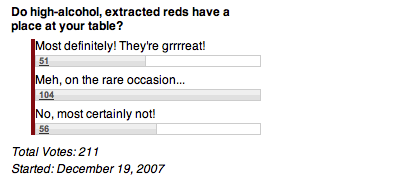
poll now closed
(image)
Hope, big gulp, Chinese sommeliers, voting – tasting sized pours
 Comrade, would you prefer red?
Comrade, would you prefer red?
The sommelier becomes an official occupation in China, “to help meet surging demand in the increasingly prosperous nation,” state media reported Sunday. Related: “nuts chef” also joins the list. [via AFP, thanks reader Grayman!]
Little Luxembourg, big gulp
China may be big, but Luxembourg is thirsty. The Grand Duchy consumes the most alcohol per capita of any country in the world. France, Ireland, Hungary, and the Czech Republic round out the top five. [MSNBC]
Menu for Hope
See the creative donations from food and wine bloggers — bid and help UNWFP! [Chez Pim]
Claret, no merci
English wine outsells than Bordeaux in England?!? So says supermarket Waitrose. Are they doing it for the smaller carbon footprint? [Decanter]
Dueling critics
The 2003 Quinault l’Enclos (find this wine), is it “all about finesse, balance, and purity” or “low in acidity, rather bland and yet again lacking freshness and definition. A couple of sips is enough.”? We love dueling critics–and it’s even more fun when the shootout is in one publication, in this case, Robert Parker’s The Wine Advocate! Incredible! Diversity of opinion is tolerated! [see more on Rockss and Fruit]
USB wine?!?
You might think this blend of wine and technology is from California, but this laptop spigot is francais–and in development until 2039. [link]
From feast to famine
The Australian wine lake has dried up. Was it the thirst of Chinese sommeliers? No, the industry has swung from glut to shortages in two years because of drought. [NZ Herald]
Vote Vino!
This site has been named a finalist for “Best Food Blog – Drinks” in annual awards at WellFed. Lend a click if you can! [WellFed.net]
Calculating the carbon footprint of wine: my research findings
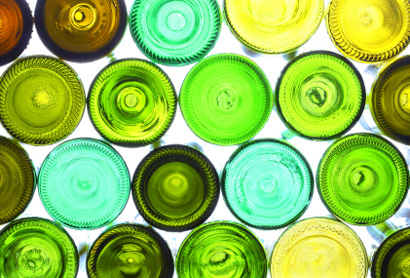
Is that a whiff of raspberries and leather you get from that red wine–or a whiff of petroleum? With some premium wines consuming three times their weight in petroleum, don’t be surprised if it is the latter.
My previous postings on the carbon footprint of wine made me want to determine just how much carbon is involved in the making and transporting of our favorite beverage. So I collaborated with Pablo Paster, a sustainability metrics specialist, and we ran the numbers. Our findings have just been published as a working paper for the American Association of Wine Economists, available here as a pdf.
While I welcome your comments on the whole paper, I’ll post some of the key findings here:
* Organic farming has lower greenhouse gas (GHG) intensity than conventional farming but I was surprised that the difference wasn’t greater. Clearly there may be other differences in a local ecosystem but the GHG difference was surprisingly small. But on the whole, it was the transportation that played a more significant role from a GHG perspective.
* Regarding the “food miles” debate, we find that distance does matter.
* But not all miles that a bottle travels are the same. Efficiencies in transportation make container ships better than trucks, which in turn are better than planes.
* Shipping premium wine, bottled at the winery, around the world mostly involves shipping glass with some wine in it. In this regard, drinking wine from a magnum is the more carbon-friendly choice since the glass-to-wine ratio is less. Half-bottles, by contrast, worsen the ratio.
* Shipping wine in bulk from the source and bottling closer to the point of consumption lowers carbon intensity.
* Light packaging material such as Tetra-Pak or bag-in-a-box has much less carbon intensity.
* Using oak chips is a more carbon friendly alternative than oak barrels, particularly those that are shipped assembled and empty around the world
* There’s a “green line” that runs down the middle of Ohio. For points to the West of that line, it is more carbon efficient to consume wine trucked from California. To the East of that line, it’s more efficient to consume the same sized bottle of wine from Bordeaux, which has had benefited from the efficiencies of container shipping, followed by a shorter truck trip. In the event that a carbon tax were ever imposed, it would thus have a decidedly un-nationalistic impact.
What does this mean for the green wine consumer? Drinking a wine made without agrichemicals, from larger format bottles, or wine that has traveled fewer miles is the more “green” option. Beyond these points (or in addition to them), you could perform your own carbon offsets, for example, by giving up one bottle for another and saying no to bottled water.
“Red, White and “Green”: The Cost of Carbon In the Global Wine Trade,” By Tyler Colman and Pablo Paster
UODATE: This paper was been published in the March 2009 issue of the Journal of Wine Research
image 1: istockphoto.com
Grenache, the ultimate back-up player, breaks out
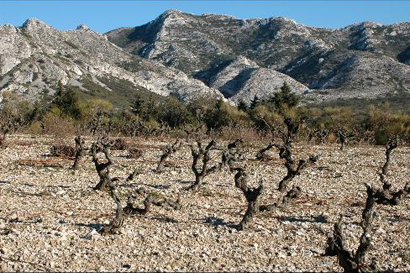
In the chorus of Rhone varieties, Grenache rarely gets to perform solo. But at the most recent lunch for the Wine Media Guild in New York City, we put it on a stage all alone with twenty five examples of the grape from five countries.
Which is the most planted red grape variety in the world? According to our speaker and grenache-o-phile, Jean-Francois Ey, it’s grenache. The grape often appeals to winegrowers because of it’s workhorse-like productivity in early years of the life of the vine. But it may appeal to consumers, particularly as the vine ages, because of wines light in tannin that can have a faint sweetness and high degree of alcohol. Even though the day of our tasting was still warm, it strikes me now as an excellent transitional red as the weather has cooled.
Our tasting consisted exclusively of old-vine grenache. “Old vine” appears to be the wine label term du jour and producers toss it around–like “reserve”–with so little regulation. Jean-Francois, 30, imports several wines from Roussillon under the Ey Vineyards label and put the question of age into perspective for Grenache. In the Mediterranean climate (with no irrigation or fertilizer), the vines take five years just to get going. Then they have 25 bountiful years with abundant yields. But as the vines age, he said, they yields become so miserly that one vine produces enough fruit for just one bottle of wine. At 30-35 years of age, a producer can make good money but after 50 years, they will make good quality he said.
Turning to the wines, we had two white grenache, one rose, several 100% red grenache and some blends, and finally a Banyuls sweet wine. Read more…
Protesting sommeliers, red wine zooms, a new future – tasting sized pours
Sommeliers unite!
“Almost a dozen” sommeliers in Melbourne are boycotting Tasmanian wine from Gunns Limited because of a perceived deforestation through their new pulp mill. The wine waiters may not be the big guns but, according to one, “Gunns have got a lot of money and a lot of power and we don’t. But we have the power, not through money, but through influence.” [“Pulp friction“]
Red hot red wine
“Château Lafite Rothschild 1996 has been selling at £7,000 ($14,300) per case, up from £4,200 six months ago; Château Mouton Rothschild 1998 has been on the market for £2,600, up from £1,500; and Château Latour 2004 has sold for £3,200, up from £2,050.” [FT.com]
The new pink?
“Citrusy and bright, Picpoul de Pinet is lively enough to be an aperitif, complex enough to drink with cheese or seafood and — no small consideration — affordable enough to indulge in a second bottle while waiting for a perfect partner for more than food.” [LA Times]
Attention deficit
“Financially we don’t mean very much to the state wine distributors, compared to Robert Mondavi,” Mike Reynolds of Hall winery told CNN. “Distributors look at the bigger brands,” he explained, and “our volume does not justify their attention.” A good point in general, but specifically, maybe the $70 million Gehry-designed winery will get the distributors’ attention for the Halls? [CNN]
A contingent future
Buy six and get one…option? Yes, that’s the new futures policy at Cloof Winery in South Africa. Buy six bottles of the 2006 Very Sexy Shiraz and get one option to buy a bottle of their top wine, Crucible. No word on whether the options themselves are tradeable, or what the demand is. [allafrica.com]
13,500 bottles of wine are the wall
What do YOU do with your empty wine bottles? I lament the demise of my local recycling every time I chuck mine into the trash.
But Peter Little in Western Australia has found a way of taking recycling into his own hands–he’s building a house out of empties. 13,500 used wine bottles to be precise. He’s filling them up with water since he claims that will provide insulation. “Water is probably, I think one of the miracle building materials of this century which nobody is using,” he told ABC News online. “From our point of view it can store more energy, heat or cool than any material we know.”
 So let’s see, at a rate of one a day, it would take 37 years to drink that many bottles! Hopefully he was able to collect some from local restaurants to speed up the process!
So let’s see, at a rate of one a day, it would take 37 years to drink that many bottles! Hopefully he was able to collect some from local restaurants to speed up the process!
Via Josh at Pinotblogger we now have the above picture of the Little house and links to other bottle houses. I’d bet their occupants don’t throw stones.
